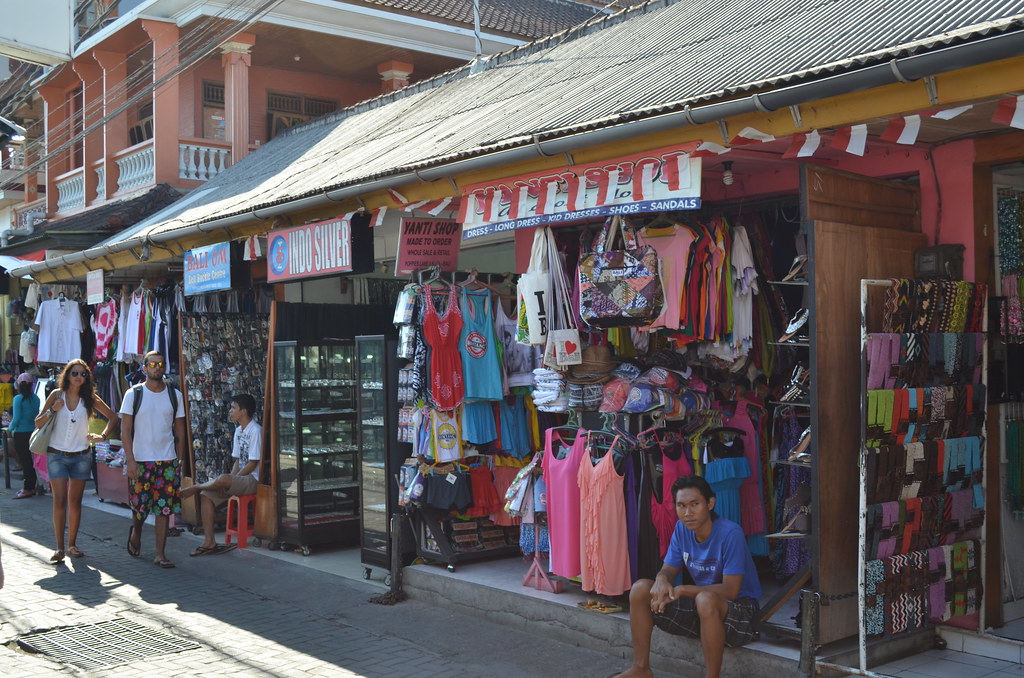Bali, often called the “Island of the Gods,” is a top destination for expats, digital nomads, and long-term travelers alike. With its stunning beaches, vibrant culture, and friendly locals, Bali has become synonymous with tropical paradise. But beyond the island’s natural beauty lies another major draw: its affordability.
Compared to many Western countries, Bali offers a high quality of life at a fraction of the cost, making it an appealing option for those seeking an exotic yet budget-friendly lifestyle. Whether you’re planning a short-term stay or considering a long-term move, understanding the cost of living in Bali is essential to making your dream a reality. This guide will break down every major expense to help you plan effectively.
Housing Costs in Bali
Types of Accommodation
Housing options in Bali cater to a wide range of budgets and preferences:
- Traditional Homestays and Guesthouses: Ideal for budget travelers or short-term stays, these typically include a private room with basic amenities.
- Apartments: Popular among expats and digital nomads, apartments offer a balance of comfort and affordability.
- Villas: For those seeking luxury, Bali is famous for its private villas, often featuring pools and lush gardens.
You can also choose between short-term rentals (often furnished and ready-to-move-in) or long-term leases, which are more affordable but may require negotiating directly with landlords.
Cost Breakdown
- Budget Guesthouses: $200–$400 per month.
- One-Bedroom Apartments: $300–$800 per month, depending on the location and amenities.
- Luxury Villas: $1,500–$5,000 per month in prime areas like Seminyak or Canggu.
Tips for Saving
- Location Matters: Renting outside tourist hotspots, such as in Sanur, Ubud outskirts, or Tabanan, can save you up to 50%.
- Negotiate Long-Term Rates: Many landlords offer significant discounts for leases of six months or longer.
- Shared Housing: Consider co-living spaces or sharing a villa with others to cut costs.
Food and Dining Expenses
Local Cuisine
Bali’s local eateries, called warungs, are the backbone of affordable dining. Serving dishes like nasi goreng (fried rice) or mie goreng (fried noodles), meals at Warungs typically cost between $1.50 and $3.
Western and International Food
For those craving international flavors, Bali’s vibrant café and restaurant scene doesn’t disappoint. Upscale eateries and trendy brunch spots in areas like Canggu or Seminyak serve Western-style meals for $8–$20 per dish.
Grocery Shopping
Shopping at local markets is much cheaper than supermarkets catering to expats (e.g., Bintang or Pepito). Expect to pay:
- Fruits and Vegetables: $10–$20 per week at local markets.
- Imported Goods: Significantly more expensive; a block of cheese could cost $7–$10.
Cooking at Home
For those who prefer to cook, monthly grocery expenses typically range from $150 to $300, depending on dietary preferences and the inclusion of imported items.
Transportation Costs
Scooter Rentals and Fuel
The most popular way to get around Bali is by scooter, which is affordable and convenient:
- Monthly Rental: $50–$70.
- Fuel Costs: Around $1–$2 per refill, enough for several days of local travel.
Taxis and Ride-Share Services
Apps like Grab and Gojek make taxis and motorbike rides easily accessible. Short trips within popular areas cost between $2 and $5, while longer journeys can range from $10–$20.
Car Rentals
For families or those traveling further afield, renting a car starts at $200 per month, excluding fuel.
Tips for Getting Around
- Avoid traveling during peak hours (8–10 AM and 4–6 PM) to dodge traffic jams.
- Always wear a helmet and ensure you have an international driving permit to avoid fines.
Utilities and Internet
Electricity and Water Costs
Electricity expenses in Bali are directly tied to your use of air conditioning and other high-energy appliances. With Bali’s tropical climate, many homes rely on air conditioning to maintain comfort, especially during the hotter months.
- Small Apartments: If you’re living in a compact, energy-efficient apartment, electricity costs are generally manageable, ranging between $30 and $50 per month. This assumes moderate air conditioning usage.
- Larger Homes or Villas: For larger spaces or properties with multiple air conditioning units, pools, or high-powered appliances, monthly electricity bills can climb to $80–$100 or more. Villas with pools may incur additional costs for pump and filtration systems.
Tips for Managing Electricity Costs:
- Turn off air conditioning when not in use. Ceiling or standing fans are cost-effective alternatives.
- Look for accommodations with solar panels, a growing trend in Bali’s eco-conscious housing market.
Water Costs: Tap water in Bali is not potable, so residents rely on bottled or filtered water for drinking and cooking. Delivery services provide large 5-gallon water bottles for about $1.50 each, with most households requiring 4–6 bottles per month.
Internet Services
In recent years, Bali’s internet infrastructure has greatly improved, making it a hub for digital nomads. Fiber-optic internet is available in most areas, especially in expat-friendly neighborhoods like Canggu, Seminyak, and Ubud.
- Reliable Plans: Fiber-optic internet packages typically cost between $25 and $50 per month, offering speeds of 30–100 Mbps. These plans are suitable for remote workers, video streaming, and online gaming.
- Shared Internet in Villas: If you’re living in shared accommodation, internet costs are often included in the rent, making it even more affordable.
Tips for Ensuring Connectivity:
- Always confirm internet speed and reliability before signing a lease, especially if you rely on a stable connection for work.
- For backup, portable Wi-Fi devices or additional data packages can ensure uninterrupted connectivity.
Phone Plans
Bali offers excellent options for prepaid SIM cards with affordable data packages. You’ll find major providers like Telkomsel, XL Axiata, and Indosat in convenient locations, including the airport and local convenience stores.
- Cost: A basic plan with 10–20 GB of data costs between $5 and $10 per month. Additional packages for heavy internet users are available at reasonable rates.
- Convenience: Recharging your SIM card is quick and easy via apps or local vendors.
Tips for Using SIM Cards:
- Opt for Telkomsel if you plan to travel to remote parts of Bali, as it offers the widest coverage.
- Check with your provider about tourist-specific plans, which often come with added perks.
Entertainment and Activities
Cultural Experiences
Bali’s rich culture is one of its biggest draws. Many temples and cultural sites are open to visitors at a very low cost:
- Temple Entry Fees: Popular sites like Uluwatu Temple or Tirta Empul charge only $2–$5 per person.
- Cultural Performances: Traditional Balinese dance shows or guided tours typically cost between $15 and $30.
Tips: Dress modestly when visiting temples, and wear a sarong or sash, which are often provided at the entrance.
Leisure and Nightlife
Bali’s nightlife is as varied as its landscape. From laid-back beach bars to exclusive nightclubs, there’s something for everyone:
- Drinks and Cocktails: Enjoy a cocktail at a beach bar for $5–$10. Upscale venues may charge more.
- Club Entry Fees: Standard entry costs range from $10 to $20, but prices can soar for special events featuring international DJs.
Popular Spots: Don’t miss beach clubs like Potato Head in Seminyak or the vibrant scene at La Favela in Canggu.
Fitness and Wellness
Bali is a haven for health enthusiasts, with a strong focus on wellness and self-care.
- Yoga Classes: Drop-in classes cost $8–$15, while packages offer discounts for regular attendees. Studios like The Yoga Barn in Ubud are world-famous.
- Gym Memberships: Monthly fees range from $30–$60, depending on the facility and amenities.
- Spa Treatments: Indulge in a Balinese massage or facial for $10–$20, making self-care accessible even on a budget.
Outdoor Activities
Bali’s natural beauty lends itself to endless outdoor adventures:
- Surfboard Rentals: Cost about $5–$10 per day, with lessons available for beginners.
- Diving Trips: Explore stunning dive spots like Tulamben or Nusa Penida for $40–$50, including gear and guides.
- Hiking Adventures: Popular sunrise treks, such as Mount Batur, are priced at $30–$50 per guided group hike.
Tips: Book outdoor activities through reputable agencies to ensure safety and quality experiences.
Healthcare and Insurance
Local Clinics vs. International Hospitals
- Local Clinics: Ideal for minor issues, with consultations starting at $20. Many clinics cater to expats and are well-versed in treating common ailments.
- International Hospitals: Preferred for more serious health concerns, with consultation fees starting at $50–$100. Popular facilities include BIMC Hospital in Kuta and Siloam Hospital in Denpasar.
Health Insurance
To cover unexpected medical costs, health insurance is a must.
- Monthly Premiums: Range from $50–$200, depending on the provider and coverage level.
- Travel Insurance: Recommended for short-term visitors to include emergency evacuations and adventure sports coverage.
Tips: Always verify if your insurance policy covers Bali and ensure you have access to emergency assistance.
Miscellaneous Expenses
Education
For expats with children, Bali’s international schools provide high-quality education but come at a price:
- Annual Tuition: Ranges from $5,000 to $15,000, depending on the school and curriculum.
Visa Fees
Long-term residents must factor in visa-related expenses:
- Tourist Visa: $35 for 30 days.
- Social Visa: Costs $50–$100 per month, renewable for up to six months.
Shopping and Luxuries
Imported goods like electronics, cosmetics, and branded clothing are notably expensive due to high import taxes. For example:
- A basic smartphone can cost up to 30% more than in the US or Europe.
- Imported snacks and groceries can be double the price of local products.
Average Monthly Budget for Living in Bali
Your monthly expenses in Bali will largely depend on your lifestyle:
- Low-Budget Lifestyle: $700–$1,200
- Accommodation: $300–$400
- Food: $150–$200
- Transportation: $50–$70
- Mid-Range Lifestyle: $1,200–$2,000
- Accommodation: $600–$1,000
- Dining out and leisure: $300–$500
- Luxury Lifestyle: $2,500 and above
- Villas and premium amenities.
- Fine dining and high-end entertainment.
Frequently Asked Questions (FAQs)
- Is Bali cheaper than other Southeast Asian countries?
Yes, while Bali can be pricier than Thailand or Vietnam in tourist-heavy areas, it still offers excellent value for money. - Can you live in Bali on $1,000 a month?
Absolutely, with careful budgeting and by avoiding luxury areas, $1,000 is sufficient for a comfortable lifestyle. - Do you need a visa to live long-term in Bali?
Yes, options include social visas, KITAS (work permits), or retirement visas for those aged 55 and older. - Is healthcare in Bali reliable?
Yes, but expats often prefer international hospitals for higher standards of care. - What are the hidden costs of living in Bali?
Import taxes, visa renewal fees, and unexpected transportation costs can add up.
Conclusion
Living in Bali offers a unique blend of affordability and luxury, making it a top destination for expats and travelers seeking a vibrant yet relaxed lifestyle. Whether you’re on a tight budget or indulging in extravagance, Bali provides options for every preference. Have you experienced living in Bali? Share your tips or questions in the comments below!



